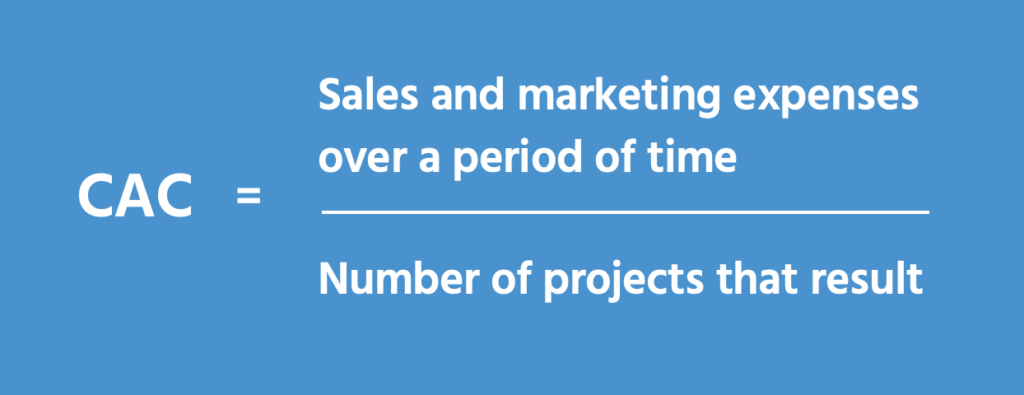A Nielsen Harris Poll reports that a vast majority of Americans (77%) prefer cash as the reward for a referral that they give to a business.
If you’re going to reward clients with cash, how much should you give? This article introduces a method to make sure that your referral offer aligns with your marketing budget and revenue goals. First, a couple considerations:
You should offer enough to catch your client’s eye. Most solar contractors offer referral incentives between $500 and $1,000. Energy efficiency contractors typically pay between $100 and $200 for a referral. The key is to consider your ideal clients and what would be enough to motivate them.
Don’t cancel out the profits from your new client. You should expect a decent return on investment from referrals – just like any marketing channel. Take care not to offer so much for a referral that you cancel your profits.
What’s my customer acquisition cost?
Pay attention to your customer acquisition cost (CAC). How much does it cost you to get a new project booked? To calculate CAC, divide your expenses for marketing and sales over a period of time by the number of projects that result.

I recommend paying attention to your overall CAC to ensure that as a whole, your sales and marketing efforts align with your target margins and profit. Better yet, segment your CAC estimates by marketing channel to better understand what works and what’s wasting money in the marketing department.
For local solar installers, CAC typically ranges between $0.28 to $0.36 per watt on average. That means you could expect to pay between $1,400 and $1,800 for a 5kW system or between $2,800 and $3,600 for a 10 kW system.
So how much should I spend?
This section comes from a presentation by Peter Troast, the Founder & CEO of Energy Circle. Troast recommends working backwards from your goals to better understand the right amount to spend on marketing for your company.
Let’s say you’re planning for the year ahead. You want to know how many leads you’ll need and what you should spend to get them. Here are the main data points to consider along with some example numbers.
- Revenue goal: $4,750,000
- Average ticket: $22,500
- Number of jobs: 211
- Close rate: 24%
In this example, you’d need 880 leads to hit your revenue target of $4,750,000. So how much should you spend to get the leads?
Consider your marketing budget as a percentage of revenue. Most solar and energy efficiency contractors spend about 7% of revenue on marketing. Some spend up to 10% to enter a new market, launch a new service line, or hit aggressive sales targets. On the other end of the spectrum, contractors with a strong brand and a lengthy list of past customers can get away with spending around 4%.
Continuing the example above, here’s the cost per lead and CAC for a marketing budget estimated at 7% of revenue.
- Marketing budget (7%): $332,500
- Cost Per Lead: $378
- Customer Acquisition Cost: $1,576 + Sales expenses
How do I track this on a regular basis?
Some age-old business advice: What gets measured gets managed. I strongly recommend using a Scorecard with metrics that give you a weekly pulse on your business and allow you to make predictions or take action when things get off track.
I first learned about the Scorecard from the Entrepreneurial Operating System (EOS) outlined by Gino Wickman in his book, Traction. If you haven’t read or listened to Traction, definitely check it out.
Here’s a sketch of how the Scorecard works. Identify five to fifteen high level numbers. Create a spreadsheet that tracks each of the numbers on a weekly basis. Be sure to include the name of the person responsible for each number.
Some examples of numbers you could track in your Scorecard:
- Leads
- Sales Appointments
- Sales Closed
- Projects
- Revenue
Smaller solar and energy efficiency contractors should limit the number metrics on their Scorecards to between five and seven. Stay focused, and don’t overwhelm your team with tracking and reporting.
If you opt for a more streamlined Scorecard, you may not have a weekly read on your CAC, but you’ll have other metrics that can alert you to troubling trends. For example, you could follow up when you see significant swings in your weekly leads, sales, or revenue.
With a good Scorecard, you’ll avoid the uneasy feeling that comes from not knowing what’s happening with your business. You also know exactly who to talk to about any issues that come up – no need to waste time talking with a half dozen people to get the story straight. It’s an effective way to manage the metrics that matter most.


